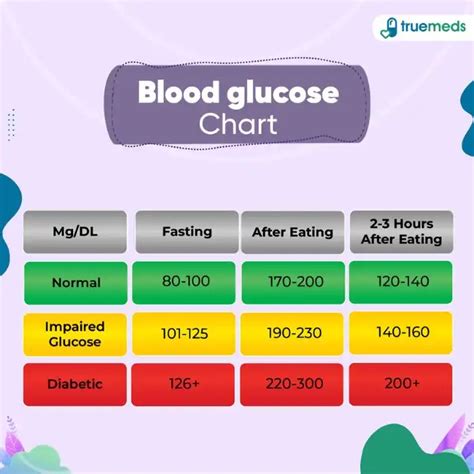Intro
Maintaining normal glucose levels is crucial for overall health, as it directly impacts the body's ability to function properly. Glucose, a simple sugar, is the primary source of energy for cells, and its regulation is key to preventing a range of health issues, including diabetes, heart disease, and neurological disorders. Understanding what constitutes a normal glucose range is essential for individuals looking to manage their health effectively.
The importance of glucose regulation cannot be overstated. When glucose levels are within the normal range, the body operates efficiently, cells receive the energy they need, and the risk of developing serious health conditions is minimized. Conversely, consistently high or low glucose levels can lead to severe complications, making regular monitoring and maintenance of glucose levels a critical aspect of health management.
The human body has a complex system for regulating glucose levels, involving the pancreas, liver, and insulin. After consuming a meal, the body breaks down carbohydrates into glucose, which is then absorbed into the bloodstream. In response, the pancreas releases insulin, a hormone that facilitates the entry of glucose into cells, thereby lowering blood glucose levels. This delicate balance ensures that glucose levels remain within a healthy range, supporting optimal bodily functions.
Understanding Normal Glucose Levels

Normal glucose levels vary throughout the day, influenced by factors such as diet, physical activity, and the timing of meals. For individuals without diabetes, normal blood glucose levels are typically as follows:
- Fasting glucose levels (after an overnight fast) should be between 70 and 99 mg/dL.
- Postprandial glucose levels (after eating) should be less than 140 mg/dL.
These ranges are general guidelines and can vary slightly depending on the laboratory or testing method used. It's also important to note that glucose levels can fluctuate throughout the day due to various factors, including stress, sleep patterns, and certain medications.
Factors Influencing Glucose Levels
Several factors can influence glucose levels, including: - Diet: Consuming high amounts of sugar, refined carbohydrates, and saturated fats can lead to elevated glucose levels. - Physical Activity: Regular physical activity helps improve insulin sensitivity, reducing glucose levels. - Stress: Chronic stress can raise cortisol levels, leading to increased glucose production in the liver. - Sleep: Poor sleep quality and duration can disrupt glucose regulation. - Medications: Certain medications, such as steroids and some psychiatric drugs, can affect glucose levels.Importance of Monitoring Glucose Levels

Monitoring glucose levels is essential for individuals at risk of developing diabetes or those already diagnosed with the condition. Regular monitoring helps in early detection of abnormal glucose levels, enabling timely interventions to prevent complications. Additionally, monitoring glucose levels can provide valuable insights into how different factors, such as diet and exercise, affect glucose levels, allowing for more informed health decisions.
For individuals with diabetes, monitoring glucose levels is critical for managing the condition effectively. It helps in adjusting medication, diet, and physical activity to maintain glucose levels within the target range, thereby reducing the risk of diabetes-related complications.
Methods of Glucose Monitoring
There are several methods for monitoring glucose levels, including: - Fasting plasma glucose test: Measures glucose levels after an overnight fast. - Oral glucose tolerance test: Measures glucose levels after consuming a sugary drink. - Random plasma glucose test: Measures glucose levels at any time of day. - Continuous glucose monitoring: Uses a small sensor inserted under the skin to track glucose levels throughout the day.Consequences of Abnormal Glucose Levels

Abnormal glucose levels, whether high or low, can have serious consequences on overall health. Hyperglycemia (high blood sugar) can lead to complications such as:
- Damage to blood vessels and nerves
- Increased risk of heart disease and stroke
- Kidney damage
- Vision problems, including blindness
On the other hand, hypoglycemia (low blood sugar) can cause:
- Shaking or trembling
- Sweating
- Hunger
- Dizziness or lightheadedness
- Confusion or irritability
In severe cases, both hyperglycemia and hypoglycemia can lead to coma or even death if not treated promptly.
Strategies for Maintaining Normal Glucose Levels
Maintaining normal glucose levels requires a multifaceted approach that includes: - Eating a balanced diet: Focus on whole, unprocessed foods like vegetables, fruits, whole grains, lean proteins, and healthy fats. - Staying hydrated: Drinking enough water helps regulate blood sugar levels. - Engaging in regular physical activity: Aim for at least 150 minutes of moderate-intensity aerobic exercise, or 75 minutes of vigorous-intensity aerobic exercise, or a combination of both, per week. - Managing stress: Practice stress-reducing techniques like meditation, yoga, or deep breathing exercises. - Getting enough sleep: Aim for 7-8 hours of sleep per night to help regulate glucose levels.Conclusion and Future Directions

In conclusion, maintaining normal glucose levels is vital for overall health and well-being. By understanding the factors that influence glucose levels and implementing strategies to manage them, individuals can reduce their risk of developing serious health conditions. As research continues to uncover the complexities of glucose regulation, it's essential for individuals to stay informed and adapt their lifestyles accordingly.
Final Thoughts
The journey to maintaining normal glucose levels is a lifelong commitment that requires dedication, patience, and persistence. By working closely with healthcare providers, making informed lifestyle choices, and staying up-to-date with the latest research and guidelines, individuals can take control of their health and thrive.What are the symptoms of high blood sugar?
+Symptoms of high blood sugar include increased thirst and urination, fatigue, blurred vision, and slow healing of cuts and wounds.
How can I lower my blood sugar levels naturally?
+Natural ways to lower blood sugar levels include drinking plenty of water, increasing physical activity, eating a balanced diet, and managing stress through techniques like meditation or yoga.
What is the difference between type 1 and type 2 diabetes?
+Type 1 diabetes is an autoimmune condition where the body's immune system attacks the insulin-producing beta cells in the pancreas, resulting in a lack of insulin production. Type 2 diabetes is a metabolic disorder characterized by insulin resistance, where the body's cells become less responsive to insulin, and the pancreas may also produce less insulin over time.
We invite you to share your thoughts and experiences on maintaining normal glucose levels. How do you manage your blood sugar levels, and what strategies have you found most effective? Share this article with someone who might benefit from the information, and let's work together to promote healthy living and disease prevention.
